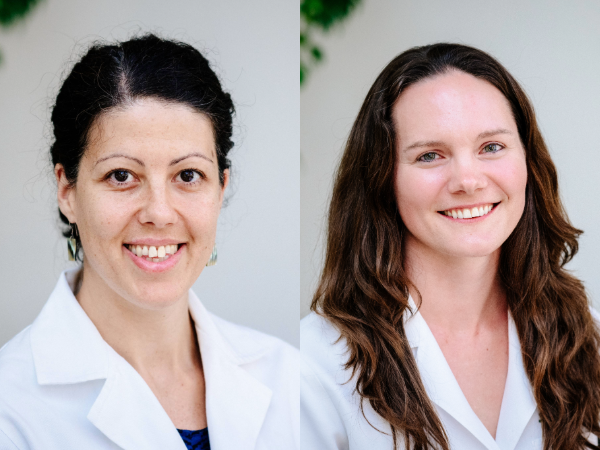 A recent grant award in the Department of Neurology serves to help investigators analyze how a group of brain cells may be responsible for changes to neural circuits that lead to the movement disorder dystonia.
A recent grant award in the Department of Neurology serves to help investigators analyze how a group of brain cells may be responsible for changes to neural circuits that lead to the movement disorder dystonia.
Mariangela Scarduzio, Ph.D., and Karen Jaunarajs, Ph.D., both assistant professors in the Department of Neurology in the Killion Center for Neurodegeneration and Experimental Therapeutics, recently received a grant from the Dystonia Medical Research Foundation (DMRF) to support research that will help clinicians better understand brain dysfunction in dystonia.
According to the DMRF, dystonia is a movement disorder characterized by muscle contractions causing abnormal movements and postures. It is linked to a growing list of genes and presents in many ways.
“My lab is dedicated to improving the lives of those affected by movement disorders by identifying how specific brain circuits generate movement and how alterations in these circuits lead to disorders like dystonia, with the final goal of translating this knowledge into new treatments,” Scarduzio explained.
Scarduzio elaborated using the metaphor of the motor system in the brain as an orchestra. Similar to how each instrument section in an orchestra contributes to the final symphony, so do the brain’s movement-controlling regions to conduct the harmony of movement in the human body. If one instrument in an orchestral section (or a specific cell type in one region of the brain responsible for movement) falls out of rhythm, the entire performance (or natural movement) suffers.
“Our goal is to discover which are the faulty instruments and retune them to restore these natural rhythms,” Scarduzio said.
Scarduzio’s lab studies brain activity in animal models that mimic human dystonia.
“What makes our approach unique is that we don’t just listen to the brain rhythms in real time during movement –we can also directly manipulate the activity of specific brain cells to see how that impacts the production of rhythmic activity and ultimately, of movement,” she added.
“Dr Jaunarajs and I are truly grateful for the opportunity to contribute to the DMRF mission and look forward to a future where research leads to a cure for dystonia”.